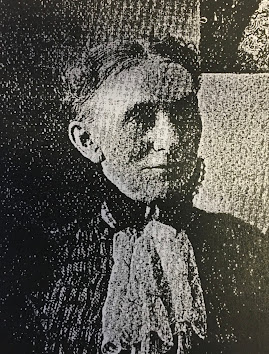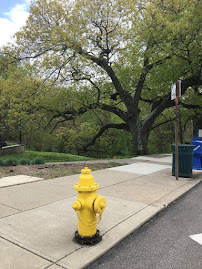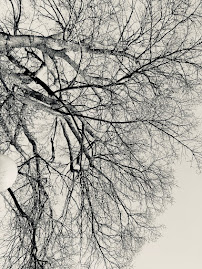Dear George,
One of my favorite projects these days is using Google and/or Gemini to scour the Internet and accumulate information on some topic of interest. Aging and death are my favorite topics these days, so here are some of the curious facts I’ve run across.
Love,
Dave
BASIC INFO
Size. The elderly population in the U.S. is growing rapidly, the decade from 2010 to 2020 seeing the fastest growth in persons aged 65 and over since the 1880’s. Demographers predict that the 65 and over population will grow from 59 million in 2023 to nearly 95 million in 2060.
Who is old? In the 1950’s “old age” was considered to begin around the mid-60s or even earlier for manual laborers. Today many people in their 60s are considered to be “middle aged”, while “old age” is perceived to begin around 74.
Stages. Gerontologists distinguish three stages of “old age”: young-old (65-74; healthier, more active); middle-old (75-84; more age-related health issues); and old-old (85 and older; significant health challenges, frailty).
LIFE EXPECTANCY
U.S. life expectancy. Life expectancy in the U.S. has increased dramatically from 47 years in 1900 to 78.4 years in 2023. Despite spending the most on health care, life expectancy in the U.S. ranks last among wealthy, developed countries (mainly because of smoking and obesity).
Rich vs. poor. Disparities in life expectancy between rich and poor Americans have been growing over time, with current studies indicating that the richest 1% of Americans live 7 years longer than the poorest 50%. This gap between rich and poor has been increasing in recent decades.
Poverty. In 1959 the poverty rate in the U.S. for adults 65 and older was 35%. Thanks to Medicare and better Social Security benefits, the senior poverty rate in 2023 was 10.1%, lower than the rates for children under 18 (15.3%) and adults aged 18-64 (11.1%). Rates for Hispanics and African-Americans are 3 times higher than for whites.
Gender gap. The gender gap in life expectancy is decreasing. In 1990 men were expected to live 7
fewer years than women. By 2017 the gap had gone down to five years (76 vs. 81 years).
DECLINE
Disease. 95% of older adults have at least one chronic disease, e.g., diabetes, arthritis, high blood pressure, and nearly 80% have two or more.
Doctors. People 75 and over visit the doctor 3 times as often as those 22-44.
Falls. One of four older adults fall each year. Falls are the leading cause of fatal and nonfatal injuries among older adults.
Pain. 25% of seniors have chronic pain, including up to 80% of those in nursing homes.
Hearing and vision loss. About 22% of people ages 65-74 have disabling hearing loss; over age 75, about 55%. One seventh of seniors with hearing impairment use hearing aids. Vision loss also increases with age. One study found that visual impairment increased from 6.2% for ages 75-79 to 36.9% for those 90 and older.
Sleep. 50-70% of individuals over age 65 report chronic sleep problems (less total sleep time, lighter sleep, increased nighttime awakenings) vs. 15-22% for the general population. By age 65, deep sleep drops to about 5% of sleep time.
Shrinking. The vertebrae in one’s spine get closer together as people age, making them about one or two inches shorter.
Drooping. Because of gravity people’s noses and ears begin to droop as they get older.
Cognitive decline. Various cognitive abilities tend to peak and then decline in early to middle adulthood: information processing speed (declines after age 19); short-term memory (after age 25); face recognition (early 30s); numerical skills (age 40); understanding other people’s emotional states (40s or 50s); vocabulary (as late as 60s or early 70s).
Dementia. Nearly half of people over age 85 develop some form of dementia.
Loneliness. Older adults are at greater risk for loneliness and social isolation, but it’s not a universal experience. Studies suggest that up to 32% of people over 55 report feeling lonely at any given time.
Social activity. In their pioneering study, Life Beyond 85 Years, Johnson and Bauer found that reduced socialization by the over-85s does not harm their well-being. Rather, they “welcome increased detachment.”
Assisted care. About 3.6% of elderly people live in assisted care facilities. Even for those 85 and over, the number is only 9%.
Suicide. People 85+ have a higher rate of suicide than any other age group (23 deaths per 100,000). Men die by suicide 4 times more often than women.
Individual differences. The aging process is a highly individualized experience, with major differences observed between individuals of the same chronological age. Some persons decline rapidly in physical abilities with age, while others maintain high levels of physical functioning well into old age. Likewise for cognitive abilities, social engagement, and emotional well-being.
LIFESTYLE
Exercise. Physical Activity Guidelines for the elderly recommend 150 minutes of moderate intensity exercise per week. National surveys indicate that between 27% and 44% of older adults meet these guidelines. About 1 in 3 men and 1 in 2 women don’t get any physical exercise.
TV. People over 65 watch TV about 4 hours a day, about twice as much as those aged 15-44.
Welk fans. Regular viewers of “The Lawrence Welk Show” on public television are predominantly 65 and over (74% in one survey).
Internet. ore than any other age group (averaging 33 hours a month).
Driving. Drivers 65 and older are more likely to wear their seat belts and drive the speed limit, less likely to drink and drive, and are involved in fewer total accidents than younger age groups (though they are at more risk of a fatal injury in a crash).
Voting. Individuals 60 and over cast their ballots more than any other age group.
Guns. 33% to 42% of older adults (65+) own guns, a higher rate than younger adults.
Marathons. In 2011 100-year-old British national Fauja Singh completed the 26-mile Toronto marathon, becoming the first centenarian to do so.
The afterlife. Americans’ beliefs in an afterlife increase with age.
Scams. In 2023 the FBI reported over 101,000 complaints from individuals age 60 and older about internet crimes, with reported losses exceeding $3.4 billion. Another 2023 study found that 75% of adults aged 50-80 reported experiencing a scam attempt in the past two years.
REWARDS
Rewards. Rewards associated with elderly years include: more free time and time for loved ones; increased contentment and life satisfaction; enhanced self-acceptance; reduced stress; a better handle on emotions; wisdom and perspective.
Happiness. Recent studies indicate that older persons (60 and over) tend to report greater happiness than young and middle-aged adults. Happiness in old age has been linked to an increased focus on the present (vs. future aspirations), better emotional regulation skills, priority given to close relationships, acceptance and wisdom, and the “positivity effect” (older adults tending to remember positive information more).
Pets. Research consistently shows that elderly people who own dogs or cats experience increased happiness and well-being. Benefits included a reduced sense of isolation, a sense of purpose, someone to interact with, reduced stress, increased physical activity, tactile comfort, and a daily routine of caring for a pet.
Super agers. Researchers estimate that fewer than 10% of elderly persons are “super agers”, i.e., those who have memory performance comparable to individuals 20 to 30 years younger.
Futurists. Many futurists predict significant increases in average and maximum human lifespans in the future. For example, computer scientist Ray Kurzweil proposes that AI’s revolutionizing of medicine could potentially halt aging by 2032.
Conclusions. Old age is a mixed bag. There is great diversity in people’s experiences in their seventies and beyond. For some, the seventies and eighties are “the golden years”; for others, times of unending pain and stress. The key factors seem to be health and financial security. When one is healthy and financially secure, the older years offer many rewards. With ill health and poverty, the reverse is likely.










































































































































































